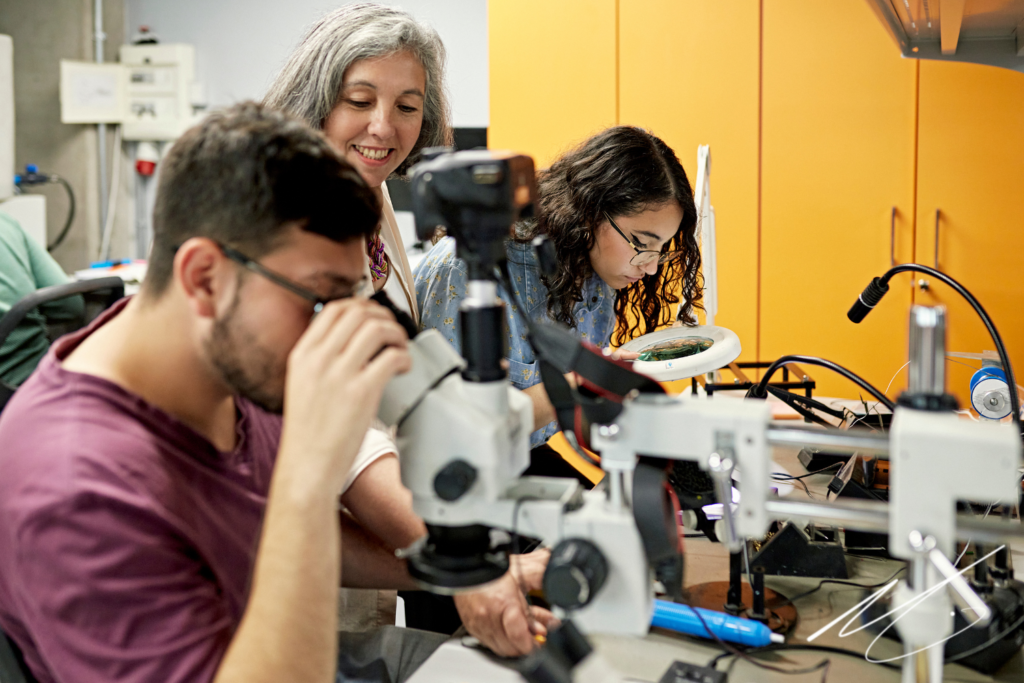Monolith
January 30, 2025
Science, Technology, Engineering, and Mathematics (STEM) are the cornerstones of innovation and progress, shaping the future of industries worldwide. However, systemic biases embedded within STEM education continue to obstruct the potential of countless individuals.
At Monolith Consultancy, we believe that addressing these biases is not just an ethical imperative but a strategic necessity for fostering innovation and excellence. In this blog, we explore the different forms of bias in STEM education, their impact on underrepresented groups, and actionable steps to mitigate these issues.
Systemic bias refers to institutional policies, practices, and attitudes that disproportionately disadvantage certain groups. In STEM education, these biases manifest in various ways, including racial, gender, and disability-based discrimination.

For individuals belonging to ethnic minorities, racial bias remains a pervasive challenge in STEM fields. Despite increasing enrolment in science and technology degrees, Black, Hispanic, American Indian, and Alaska Native people remain significantly underrepresented. Subtle yet harmful practices, such as lower expectations from educators or the lack of role models from similar backgrounds, can hinder these students’ academic journeys. Furthermore, systemic racism within the educational pipeline—from access to high-quality schools to funding disparities—creates barriers that many find insurmountable.
Women face a unique set of challenges in STEM education and careers. While there have been strides in increasing female participation, women remain significantly underrepresented, particularly in fields like engineering and technology. Gender bias often manifests in the form of societal expectations, a lack of mentorship, and male-dominated classroom dynamics. This discouragement frequently results in women opting out of STEM fields altogether, perpetuating the gender disparity.

People with disabilities encounter significant obstacles in accessing STEM education. Insufficient accommodations, outdated infrastructure, and a lack of adaptive learning materials often result in exclusion. Furthermore, biases—both conscious and unconscious—about their abilities can stifle the ambitions of students with disabilities, limiting their opportunities to thrive in STEM fields.
The consequences of systemic bias in STEM education are far-reaching. These biases not only restrict individual potential but also deprive the STEM sector of diverse perspectives and innovative ideas. Research consistently demonstrates that diverse teams perform better, solve problems more creatively, and drive innovation more effectively. By excluding underrepresented groups, systemic bias diminishes the overall potential of the STEM industry.
For students, the psychological toll of bias can be immense. Imposter syndrome, reduced confidence, and mental health challenges are common among those who face discrimination. These factors often lead to higher dropout rates and lower retention in STEM programmes, further exacerbating the lack of diversity.

Addressing these entrenched issues requires a multi-faceted approach that involves educators, policymakers, organisations, and individuals. At Monolith, we champion solutions that foster inclusivity and equity in STEM education. Below are some actionable strategies to combat systemic bias:
1. Implementing Inclusive Curricula
Curricula should be designed to reflect the contributions of individuals from diverse backgrounds. Highlighting the achievements of underrepresented groups in STEM can inspire students and challenge stereotypes. Additionally, integrating DEI principles into STEM programmes can create a more welcoming environment for all learners.
2. Providing Mentorship and Role Models
Connecting students with mentors who share similar backgrounds can significantly improve their confidence and aspirations. Mentorship programmes should prioritise diversity to ensure all students see themselves represented in STEM fields.
3. Training Educators in DEI Practices
Educators play a critical role in shaping the experiences of STEM students. DEI training can help teachers identify and address their own biases, creating a more equitable learning environment. At Monolith, we collaborate with institutions to provide tailored DEI training for educators, equipping them with the tools to support all students effectively.
4. Enhancing Accessibility
Educational institutions must prioritise accessibility by investing in adaptive learning technologies, upgrading infrastructure, and ensuring compliance with accessibility standards. Inclusive policies that consider the needs of students with disabilities can level the playing field and open doors to STEM opportunities.
5. Building Supportive Networks
Organisations like STEAM Ahead are paving the way for systemic change by offering resources, advocacy, and support for underrepresented groups in STEM. Collaboration between institutions and organisations like Monolith can amplify these efforts and drive measurable impact.

Promoting diversity, equity, and inclusion in STEM education is not just about fairness—it’s about unlocking the full potential of the STEM industry. By breaking down systemic barriers, we can cultivate an environment where innovation thrives and everyone has the opportunity to contribute.
At Monolith Consultancy, we are committed to driving this change. Our tailored DEI training programmes are designed to empower educators and organisations to create truly inclusive environments. Let’s work together to address systemic bias and pave the way for a more equitable future in STEM.
Get in touch today to learn how we can help you develop and implement effective DEI strategies tailored to your needs.
Book a no-commitment, complimentary 20-minute Productivity Assessment with our experts. Discover how our team can best support your business